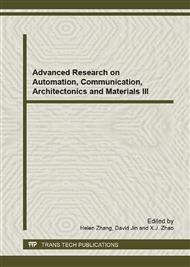p.141
p.145
p.149
p.153
p.157
p.163
p.167
p.172
p.177
Preparation of Reactive Powder Concrete Having High Volume of Phosphorous Slag Powder and Silica Fume
Abstract:
As an ultra-high performance concrete, reactive powder concrete (RPC) has broad practical application prospects. In this paper, phosphorus slag (PS) powder is utilized as one reactive component to prepare RPC. The effect of the PS content and water-binder ratio on the strength (flexure and compression) of concrete mixtures containing PS and silica fume (SF) is investigated. The results show that utilization of PS powder and SF in RPC production is feasible. RPC samples whose content of PS was about 30%-35% (by weight of binder) and water-binder ratio (W/B) was 0.16 were prepared after they had been cured at 95°C for 3 days. The compressive and flexural strength of those samples was 21.2 MPa and 142.2 MPa respectively.
Info:
Periodical:
Pages:
157-160
Citation:
Online since:
August 2013
Authors:
Price:
Сopyright:
© 2013 Trans Tech Publications Ltd. All Rights Reserved
Share:
Citation:


